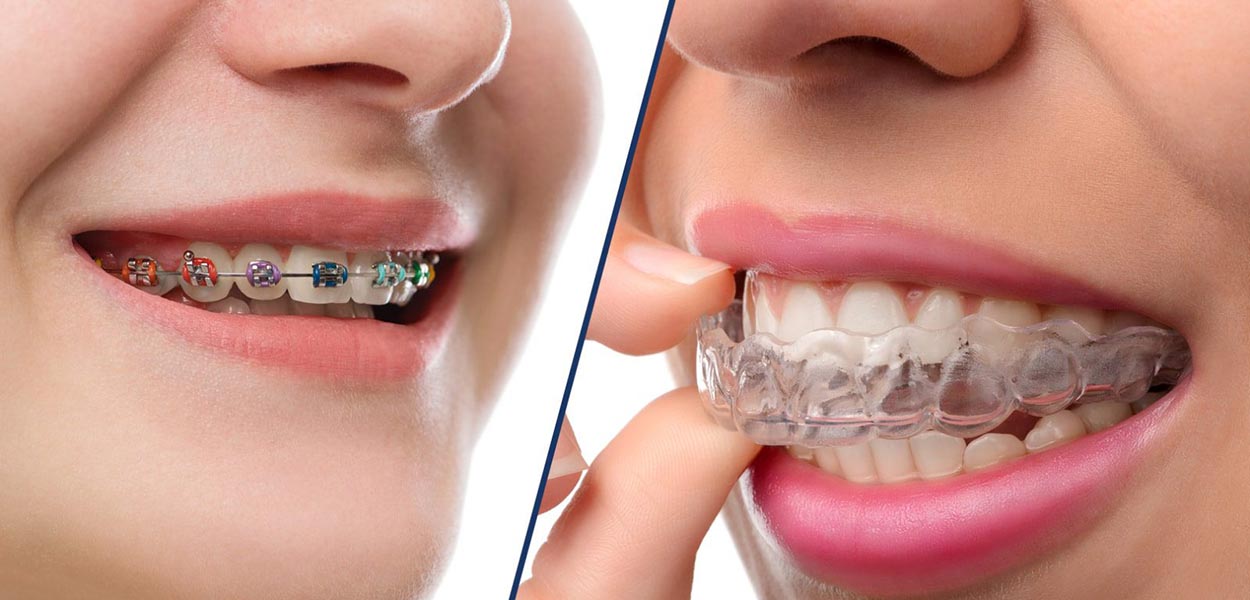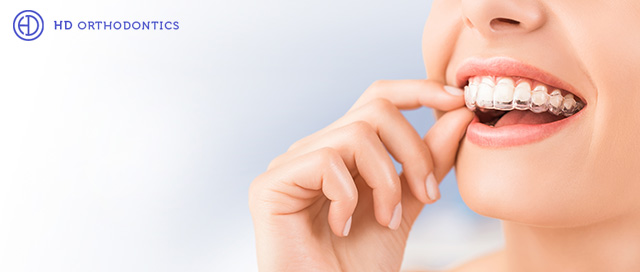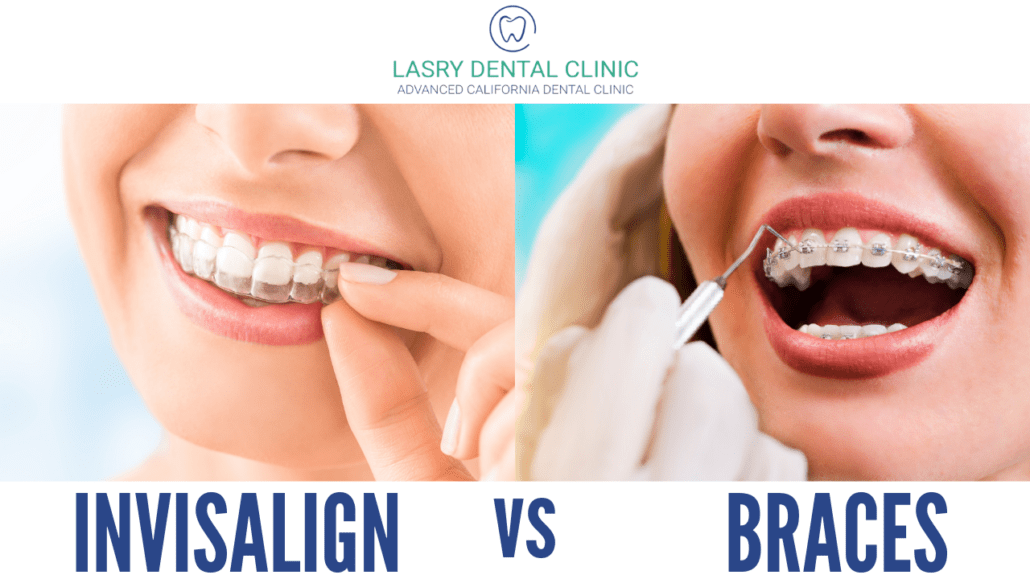Invisalign for Teens: A Modern Solution to Straightening Young Smiles
Invisalign for Teens: A Modern Solution to Straightening Young Smiles
Blog Article
Invisalign vs. Standard Braces: Which Choice Is Right for You?
When thinking about orthodontic therapy, the option in between Invisalign and traditional braces offers several important aspects that warrant cautious assessment. Invisalign supplies a discreet option with detachable aligners, while conventional dental braces supply an extra noticeable yet efficient option for extreme imbalance. Each choice incorporates distinctive benefits and disadvantages connected to looks, convenience, therapy period, and expense. Understanding these nuances is essential for making an informed decision that aligns with your individual preferences and lifestyle. The inquiry remains: which choice will best satisfy your orthodontic demands and expectations?
Summary of Therapy Options

In contrast, conventional braces consist of steel brackets and cords that are bound to the teeth. This approach uses continuous stress with time to achieve placement. While efficient for complex orthodontic issues, standard dental braces need normal brows through for modifications and can pose obstacles in maintaining oral health as a result of the problem of cleansing about cables and braces.
Both choices have their advantages, and the option typically hinges on specific dental conditions, lifestyle preferences, and person conformity. Inevitably, seeking advice from an orthodontic expert is vital for figuring out the most suitable treatment plan customized to private demands. Recognizing the nuances of each option can dramatically influence the total success of orthodontic therapy.
Aesthetic Factors To Consider
A significant factor influencing the option between Invisalign and traditional braces is the visual allure each therapy supplies. Invisalign aligners are crafted from clear plastic, making them practically unnoticeable when worn. This very discreet appearance is particularly interesting adults and teenagers that might feel self-conscious about their orthodontic therapy. The capacity to maintain an all-natural smile throughout the placement process can significantly boost the patient's confidence in specialist and social setups.
On the other hand, standard dental braces contain steel brackets and wires, which can be a lot more recognizable. While improvements in orthodontic innovation have actually caused the advancement of smaller sized braces and tinted elastics, standard braces still maintain a more obvious profile. For some people, the exposure of dental braces might discourage them from looking for essential therapy.
Inevitably, the option in between Invisalign and conventional braces might depend upon individual preferences pertaining to aesthetic appeals. Individuals who focus on discretion usually favor Invisalign, while those who are less concerned about presence may opt for typical dental braces. Comprehending the aesthetic effects of each choice is critical for making a notified decision that lines up with one's way of life and preferences.
Convenience and Convenience

In regards to comfort, Invisalign aligners are detachable, enabling individuals to appreciate their preferred foods without constraint and maintain ideal dental hygiene. Cleaning and flossing are streamlined, as the aligners can be gotten throughout these regimens, whereas conventional braces call for cautious navigating around brackets and cords.
Furthermore, Invisalign's progressive system enables less orthodontic her comment is here brows through. People usually get several sets of aligners simultaneously, which can streamline the therapy procedure and minimize time spent in the orthodontist's chair. In contrast, typical More Bonuses braces necessitate regular adjustments, making them less convenient for those with active timetables. Invisalign. On the whole, the convenience and comfort of Invisalign make it an enticing option for numerous individuals seeking orthodontic treatment.
Therapy Duration and Efficiency
While both Invisalign and traditional braces are efficient in fixing oral imbalances, the duration of treatment can vary dramatically between the 2 options. Usually, Invisalign treatment can take anywhere from 12 to 18 months, depending on the complexity of the instance. The clear aligners work by slowly changing teeth into their preferred placements, and regular follow-ups with an orthodontist aid make certain progression continues to be on the right track.
In contrast, standard dental braces typically require a longer dedication, generally ranging from 18 months to three years. This is due to their fixed nature and the use of brackets and wires, which can be much more effective for severe misalignments and complicated situations (Invisalign). The treatment efficiency of standard dental braces is well-documented, as they permit precise adjustments and higher control over tooth motion
Eventually, the selection between Invisalign and standard dental braces might pivot on both the awaited therapy duration and the particular oral concerns available. Consulting with an orthodontist is essential, as they can give customized suggestions based upon specific requirements, making sure the selected method straightens with preferred results and timeframes.
Expense Comparison and Insurance Options
Price plays a substantial function in the decision-making process for people taking into consideration orthodontic therapy, whether deciding for Invisalign or standard braces. On average, the cost of Invisalign arrays from $3,000 to $8,000, while standard braces normally set you back between $2,000 and $6,000. Elements influencing these costs include the complexity of the instance, the period of therapy, and geographical place.
Insurance coverage can significantly influence out-of-pocket costs. Many oral insurance strategies offer partial coverage for orthodontic therapies, but the specifics can differ widely. It is crucial for people to evaluate their insurance plan to determine the degree of coverage for either alternative. Generally, typical dental braces may be more regularly covered by insurance policy strategies compared to Invisalign, which some insurance firms classify as a cosmetic procedure.
Furthermore, numerous orthodontic techniques provide flexible layaway plan, making both therapy alternatives more easily accessible. People need to inquire about prospective funding choices and discount rates for ahead of time settlements. Examining the complete expense, consisting of insurance policy benefits and layaway plan, is necessary for making an educated choice that lines up with both aesthetic preferences and spending plan considerations.

Conclusion
In summary, the option between Invisalign and typical braces depends upon several variables, consisting of visual choices, convenience, therapy duration, and expense. Invisalign provides a very he has a good point discreet, removable option that assists in oral hygiene and nutritional flexibility, while traditional dental braces may be extra suitable for complicated dental issues and commonly come with a lower price factor. Inevitably, appointment with an orthodontist is important to examine specific circumstances and establish the most proper treatment option for achieving ideal oral positioning.
When considering orthodontic therapy, the option between Invisalign and traditional dental braces presents numerous essential variables that warrant careful analysis.Comparing Invisalign and conventional braces discloses unique therapy choices for orthodontic improvement.While both Invisalign and typical braces are reliable in correcting dental misalignments, the duration of treatment can vary substantially between the 2 alternatives.Cost plays a substantial duty in the decision-making process for individuals considering orthodontic therapy, whether deciding for Invisalign or standard braces.In summary, the option between Invisalign and traditional braces hinges on several factors, including aesthetic preferences, convenience, treatment period, and cost.
Report this page